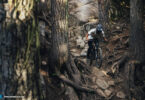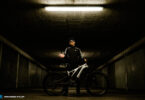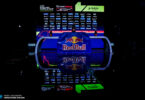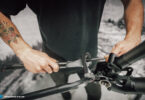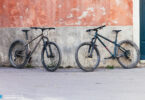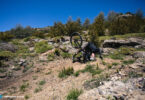The enduro season is over, and all enduro newbibes probably had to find out where their strengths lie – and especially where they don’t. By taking the CUBE Action Team riders André Wagenknecht and Ludwig Döhlas examples, we want to prove that there is no such thing as a universal formula, but that is up to each individual to work on his or her own weaknesses. Just like Ludwig and André: The first an EX-Cross-Country rider, and the latter EX-Downhill rider…
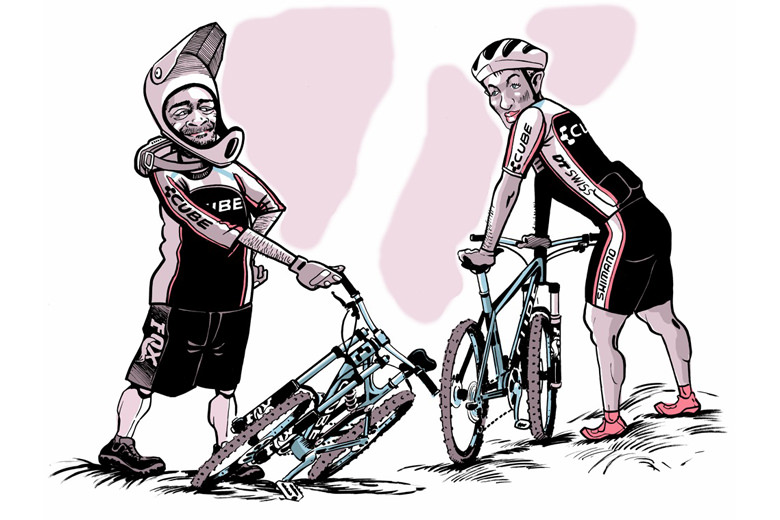
Ludwig Döhl:
Skills over endurance
“As I come from a cross-country background, my training during the last few years was pretty much focused on endurance. Even though I still pedaled many kilometers on a racing bike this spring, I continuously increased my units on a mountain bike as the season was approaching, usually with interval training. Generally speaking, I kind of slacked on my endurance training in order to polish my biking technique. Still, this doesn’t mean that I don’t do long rides anymore or that I only chill out at the bike park. In fact, it only means that my training is now a lot more multifaceted. One thing I’ve changed, for example, is that I ride technical sections on singletracks several times, in order to find the perfect line or to try to ride more fluently by purposely pedaling less and trying to generate speed by pumping. Whereas I used to ride the whole trail full speed, I now take more time and try to perfect my riding style. Overall, I would say that I increasingly play with the terrain, also because an enduro bike has a lot more to offer compared to my hardtail. Nevertheless, I plan on participating in a marathon race or two during the upcoming year in order not to lose my fitness.”
Line choice
“I was facing some problems regarding line choice at the beginning of the season. I had never owned a fully before and I used to cope with the downhills in cross-country by adhering to the motto ‘save energy and relax.’ In enduro, it was suddenly all about tenths of a second and not about cutting in on someone. An example par excellence for this was when André and I were riding the downhill track in Winterberg, Germany. Arriving at the bottom of the trail, I told him he was riding like a beginner because I had loads of space to overtake in every single turn. During our second test run, we stopped at all the elementary spots and he explained to me why he decided to ride one specific line. With every following key spot, I understood more and more what it was all about. It is not about making your way against hundreds of competitors, but about getting as much speed out of the turns as possible to master the trail as smoothly as possible.”
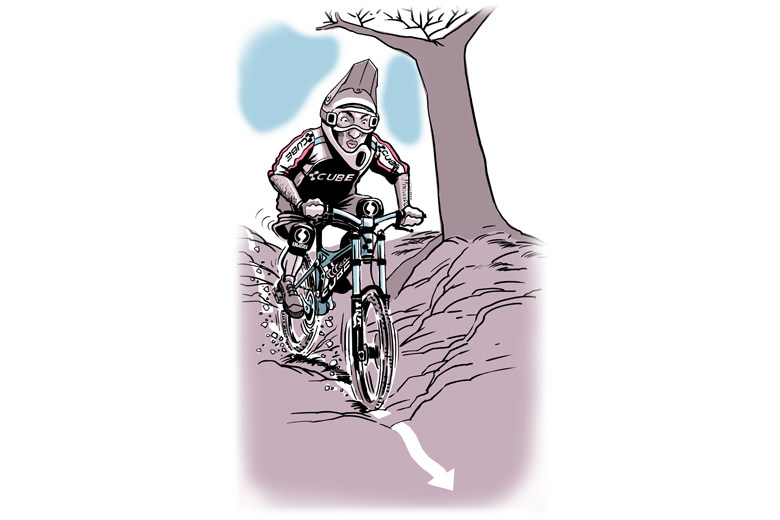
High-speed sections & jumps
“Another relic from my hardtail times is my inhibition regarding large jumps or extremely fast sections. Even though I manage to jump almost anything at a race, it always costs quite a mental effort. During workouts at home, I usually do not manage to force myself and therefore skip the jumps. When riding with team colleagues, we tend to push each other. Normally, André rides first, because he has the soundest riding style and the most practice in enduro. He can actually get me to do difficult jumps and, most of the time, I think he is less comfortable with doing that than I am myself. I want to ride more with the downhill bike next year, and I might actually compete in a downhill race or two in order to gain confidence in speed and jumps.”
Concentration
“When I started racing enduro, I might have been able to ride single sections pretty fast, but I used to crash on almost every stage as well. This was partly due to the fact that I was not used to these high speeds, and also due to a lack of concentration. Instead of completely focusing my concentration on myself and the track, I sometimes even checked out the spectators next to the track. Even though it is extremely hard to train ‘concentration,’ I found a couple of ways that work for me. You simply have to find some really difficult things that need your entire concentration to actually succeed.
And by these ‘really difficult things,’ I do not mean big drops or challenging trails, but rather things like juggling or slacklining. I often even combine different ex- ercises with one another. For instance, I juggle with three balls while I balance on a large stability ball. If I do not entirely concentrate during this exercise, I slip off the ball. This is exactly the kind of concentration I need during the start and throughout a race to complete a smooth and flawless ride.”
André Wagenknecht:
“To be honest, during my time as a downhill rider, I never used to be a ‘workout-nerd,’ unfortunately. Instead, I was one of the guys who were looking for their freedom, even during biking. It was always important to me to do exactly what I felt
like. During the junior years, we already had workout timetables, but I realized eventually that I was not exactly that kind of guy and that the mind plays a big role, too. Therefore, the motto was ‘be fit and have fun’ – somehow, the plan worked out.
Changing over to enduro was a new challenge for me. The biking itself hasn’t changed – it is still all about time – but new aspects have been added. And then there was the great BAMMMMM! Damn it! I really need to be fit for only three to four minutes. I definitely imagined the shift to enduro to be a lot easier.
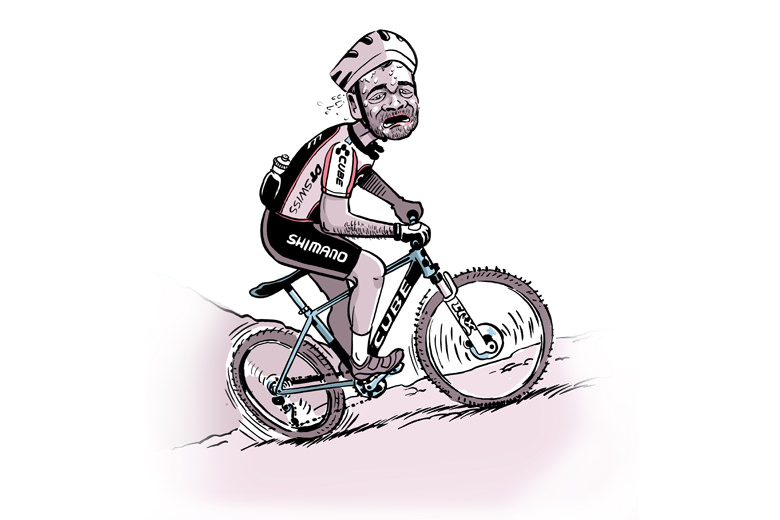
I had always been doing just fine with my fitness on short stages, but as soon as they got a little longer I was totally screwed. In my opinion, a very well trained rider with a good technique is generally faster than the best rider (technically speaking) with only moderate fitness. For me, this means that I have to catch up to Ludwig, regarding fitness, where as he has to pick up some more technical skills. So in the end, we complement each other pretty well. I haven’t had a good and enjoyable season like this one for a very long time, which is the result of the extremely positive atmosphere throughout the team.
I will probably have to suffer through the winter in several different stages. The most difficult part about it is to conquer one’s weaker self
Ludwig and I are now looking for some motivation for the winter season. This also means getting off of the bike and onto the skis (Nordic and alpine) for once. Runners and swimming trunks will find use, just like the ‘half-a-liter-beer-measurements’ for the brain!”
André’s workout tips

“To stay fit over the winter, I often do some easy and simple exercises, which everyone can basically do at home. The most difficult part is to actually conquer your weaker self. I basically work with my own body weight; I neither use weights nor fitness machines. All I use as a training aid is the ‘Blackroll’ to strengthen proprioception. All exercises with three sets of twenty repetitions and a continuous increase of the number of repetitions in the course of the winter. I currently train at a lower intensity level, meaning easy rides or runs in combination with a couple of exercises for stomach, legs, shoulders and back. For this, I currently only use my body weight, a stability ball and light weights. I set a maximum of three times a week for the exercises, with three to four sets each. To train my stamina, I usually bike, go running, or cross-country skiing three days in a row, followed by a break for a day or two. At the moment, I basically train for the workout. This means that I am currently only under a little amount of stress, which relaxes me for the upcoming workouts. You actually lose more throughout the season than you might think. You tend to get stiff and stressed.”

Varying push-ups
For this, the Blackroll is positioned under the toes. I usually start by supporting myself with my hands shoulder distance apart and then decrease the distance between my hands with each set. The closer the hands come together, the more the forearm muscle is trained.
Single leg squats
Single leg squats are a mixture of strength and balance exercises. Precise movement is essential, because otherwise this exercise can be harmful for the knee joints. I always try to keep the knee behind the toes when squatting down and I lift the non-weight bearing leg to the front.
Pull-ups
I hold my hands on the pull-up bar just like I hold the handlebar on a bike. Make sure that the grip is similar to your grip on a handlebar. Everyone holding the bar the other way around only trains the biceps, and not the desired entire upper body. Again, I vary the distance between the arms. The farther the hands are apart, the meaner and harder the exercise.
Sit-ups
For this exercise, I put the Blackroll underneath my butt and do ‘simple’ sit-ups. I vary this exercise by turning the upper body either left or right.
Lateral push-ups
This exercise is done by supporting myself with one forearm on the ground and my ankle positioned on the Blackroll. I move my hip up and down from the ground. This is a very good exercise for the lateral back muscles. Make sure to stay straight and, just like all the other exercises, do them smoothly.

Read more stories in our ENDURO issues – free & digital, of course!
Words: André Wagenknecht | Illustrations: Albert Escoda
Did you enjoy this article? If so, we would be stoked if you decide to support us with a monthly contribution. By becoming a supporter of ENDURO, you will help secure a sustainable future for high-quality mountain bike journalism. Click here to learn more.



